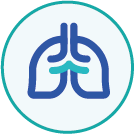Why Allertyze
Why do allergen Test?
Diagnosing and confirming allergens is the first step in the diagnosis and treatment of allergic diseases!
30-40% of the global population has suffered or is suffering from allergic diseases, and the cases increase continuously. It is estimated that by 2050, more than 4 billion people worldwide will suffer from asthma, allergic rhinitis and atopic dermatitis!
Significance of Allergen Testing
The prevention and treatment methods of allergic diseases include allergen avoidance, desensitization therapy and omalizumab treatment, etc., which require the identification of allergen types, so early laboratory allergen detection is very important for early diagnosis, treatment and prevention.

Allertyze vs. Traditional way
You can conveniently obtain Allertyze IVD products from your local pharmacy or online. The test, which can be performed at the comfort of your home, doesn't require any additional equipment. Furthermore, it boasts a quick turnaround time of just 15 minutes. You also have the flexibility to opt for a test combination that best fits your needs.
| # | Allertyze | Send samples to lab | Testing in hospital |
|---|---|---|---|
| Get results within 30 minutes | ✅ | About 3 days | 1-2 days |
| Complete the test at home | ✅ | Completed in the lab | Completed in the lab |
| No need for testing equipment | ✅ | Need testing equipment | Need testing equipment |
| Test common types of allergens | ✅ | ✅ | ✅ |
What are the common allergic diseases?
Respiratory allergic reactions: allergic rhinitis, allergic asthma....
Allergic reactions of the digestive tract: allergic gastroenteritis ....
Skin allergic reactions: specific dermatitis, eczema, urticaria....

400 million
People with allergic rhinitis
Allergic rhinitis affects 10% to 30% of the adults. It is the most common non-infectious rhinitis and seriously affects the quality of life of patients.

300 million
People with allergic asthma
Every year, 1 million people worldwide die directly or indirectly from asthma or asthma-induced diseases, 25% of which can be avoided through timely diagnosis and treatment.

250 million
People with food allergies
allergic reactions are prone to occur
e.g. anaphylactic shock